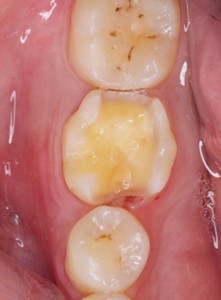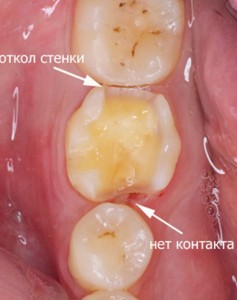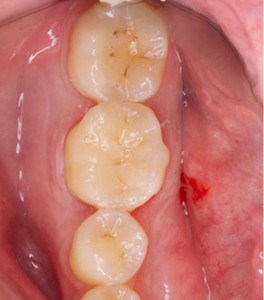Chewing teeth restoration
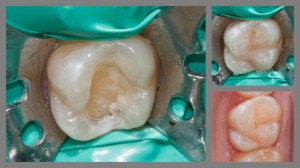
Chewing teeth perform an essential function in the digestive process.
Due to the heavy load, they are more often destroyed than others.
During the restoration, it is important to preserve not only the appearance of the chewing teeth, but also the functionality.
The restoration of chewing teeth is possible only with normal restoration of the shape of hard tissues.
So that chewing teeth can fully perform their function, when building, an important point is to take into account the shape of the tubercles and fissures, as well as their correspondence to the opposite teeth.
Currently, there are many methods that can not only restore the original appearance of the teeth, but also restore their functionality.
Direct restoration of the teeth is more convenient for the patient, as there is no need to visit the clinic many times and is cheaper.
- Extending a tooth crown with the help of compomers and composites is done at one time by the dentist.
- Composites are held by glue (adhesive), and compomers additionally strengthen the enamel due to the release of fluoride.
Restoration the indirect method of teeth is more time consuming and financially, but also more aesthetic and durable.
Features
The most important task in the process of restoration of a chewing tooth is the restoration of its anatomical shape.
- This is due to the fact that the tissues of the teeth and the tissues that surround them represent a biomechanical structure that ensures the distribution of the masticatory load.
- Defects in dental tissues can disrupt the integrity of this structure and are stress concentrators.
- With repeated loads, tooth tissue fatigue occurs in the place of excessive stress, which leads to the formation of microcracks.
- Microcracks, merging with each other, lead to the formation of chips or fractures of the tooth.
Therefore, tooth restoration performed incorrectly from an anatomical point of view can cause complications such as splitting of a part of a tooth, chipping of a restoration, etc.
Direct restoration
It is carried out in several stages:
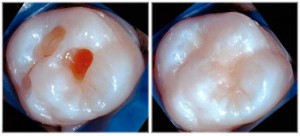
- Preparation of the tooth for extension (hygienic tooth brushing, color matching of composite material, anesthesia).
- Removal of affected tooth tissue.
- Tooth isolation from moisture.
- Installing the pin in the root canal.
- Extending the crown of the tooth with composite materials.
Use of pins
With large losses of tooth tissue, a pin is used.
The most popular: fiberglass, silver, titanium, anchor structures.
How to install:
- The doctor prepares the root canal for fixing the pin: expands the mouth, deepening into the canal.
- The pin is fixed to a special cement.
Video: “Recovering Contact Points”
Indirect method
In the restoration of chewing teeth, modern technologies are used.
For the restoration of chewing teeth, most of the steps take place outside the oral cavity.
As an indirect restoration, the installation of tabs is used in the absence of less than half of the tooth and crowns - if the tooth is damaged more than half.
Tooth restoration with tabs
The installation of a ceramic insert allows you to maximally preserve all living tissue of a decayed tooth, eliminates depulpation and the development of repeated caries.
The restoration of chewing teeth with ceramic inlays allows you to fully restore the original appearance and functionality.
Clinical case
- A patient came to the clinic with complaints of: the presence of a crunch when chewing, as well as a jam of food debris in the interdental spaces and inflammation of the gums.
- After the examination, the dentist discovered a split wall of the tooth around the large fillings and the lack of its functionality. Also, as a result of the inspection, it was revealed that there is insufficient contact between the teeth, which contributes to the jamming of food debris and causes injury to the gum tissue. As a result of a constant inflammatory process, periodontitis began to develop. The seal did not fit well at the edges and was different in color.
- As a result, a treatment plan was drawn up and a decision was made to remove the old fillings and restore the tooth with a ceramic insert.
|
|
|
|
How much is
The cost of restoration depends on many factors.
The restoration of chewing teeth, the price of which depends on the clinical case, the method of restoration, the materials used, is a relatively inexpensive procedure and is available to every patient.
The final cost of tooth restoration can be announced only after visiting the dentist.
| Type of restoration | Prices (rub.) |
| 1/3 tooth restoration | 2000 |
| One root canal filling | 1600 |
| Fiberglass pin installation | 2100 |
| Restoration ½ of the tooth crown | 2400 |
| Restoration of more than ½ tooth | 3000 |
Reviews
Modern composite materials used for tooth restoration have sufficient strength, are very similar to the color and transparency of the teeth, have a long service life and are unpretentious in care.
Reviews on the restoration of the teeth of the chewing group using light-cured composites by patients:
- While cracking a nut, a piece of tooth broke off. I went to the dentist. The doctor suggested a tooth extension with a filling. The tooth was restored in one visit, the procedure is painless. The result was excellent.
- A few years ago, he opened a bottle with his teeth, as a result, he broke one tooth. The dentist put a seal, which soon fell off. The next time I went to the doctor, the doctor suggested installing a ceramic tab, which is much more reliable than a seal. First, they took a cast and sent it to the laboratory, where they made a ceramic tab. On the day of installation, anesthesia was performed and the structure was fixed. The tooth turned out like a real one, completely indistinguishable from neighboring teeth.
- After several unsuccessful restorations of the chewing tooth with composite materials, she turned to the dentist. He said that the seal should be strengthened with a pin, or put a tab. I chose the pin. The dentist using cement fixed a metal pin in the root canal, and fixed a cermet crown on top. Now I can chew normally and I'm not afraid that my new tooth will break the next time I bite off solid food.
Before and after photos
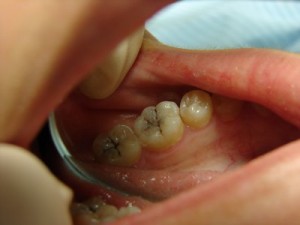 |
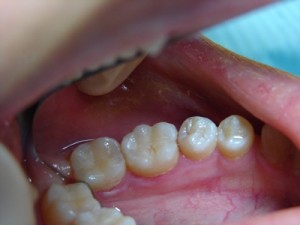 |
 |
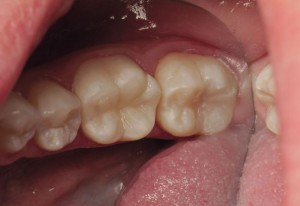 |
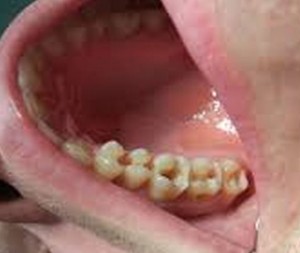 |
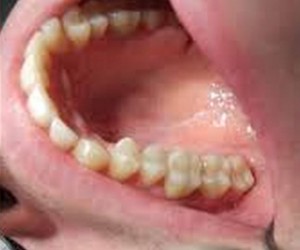 |
